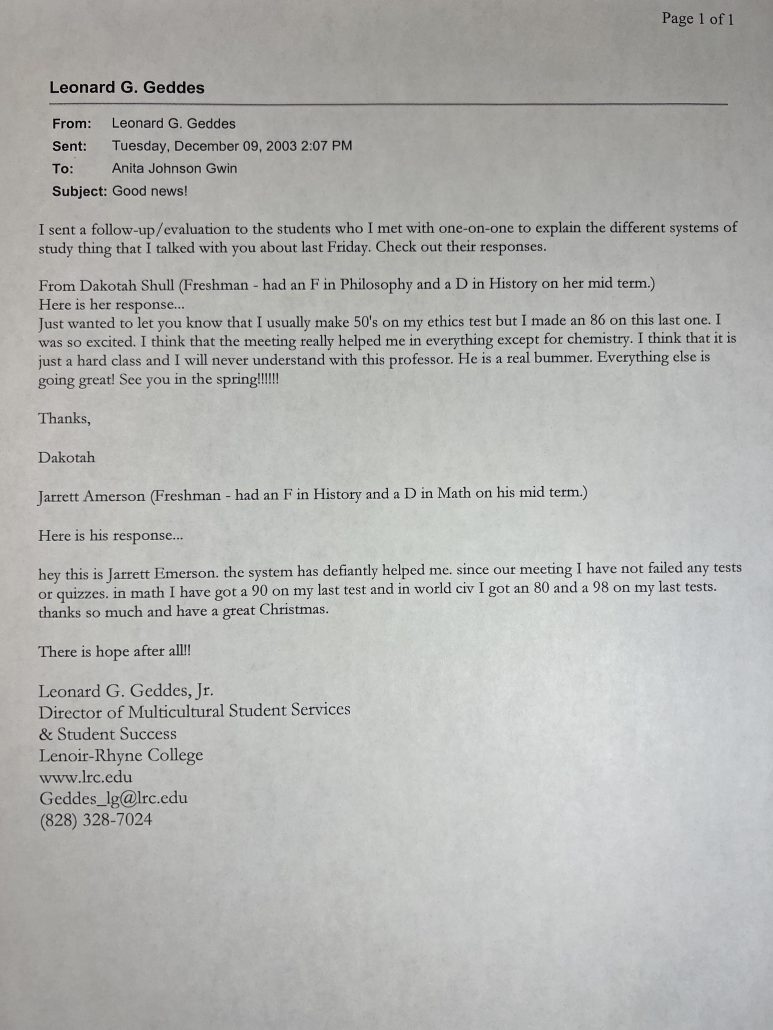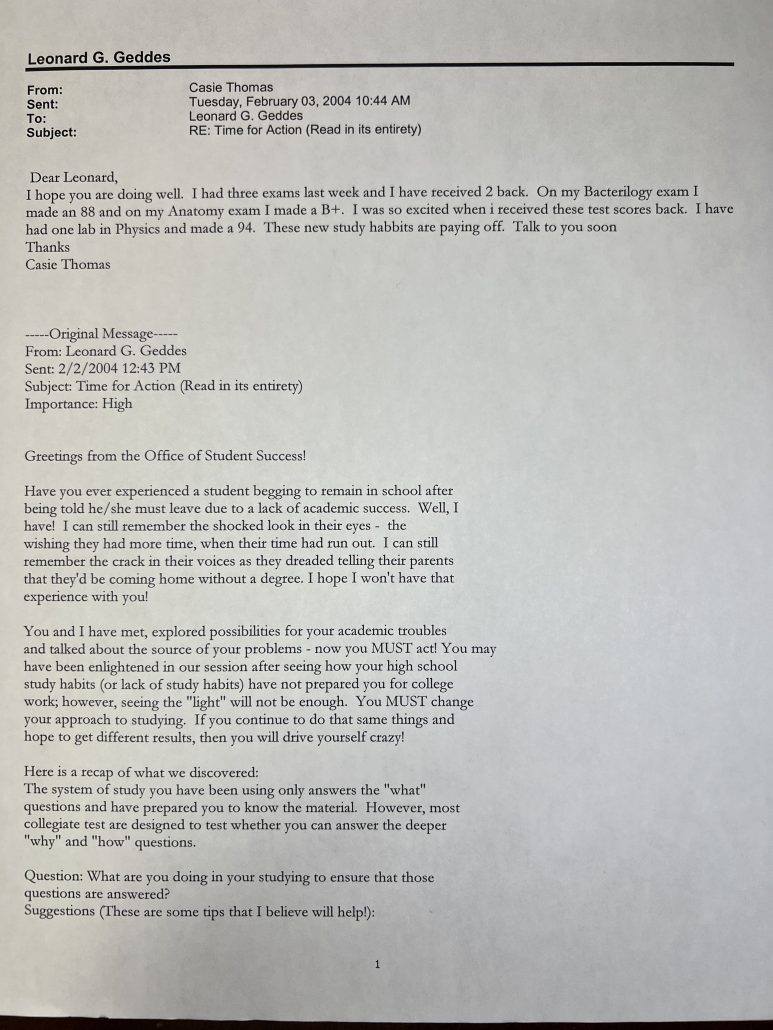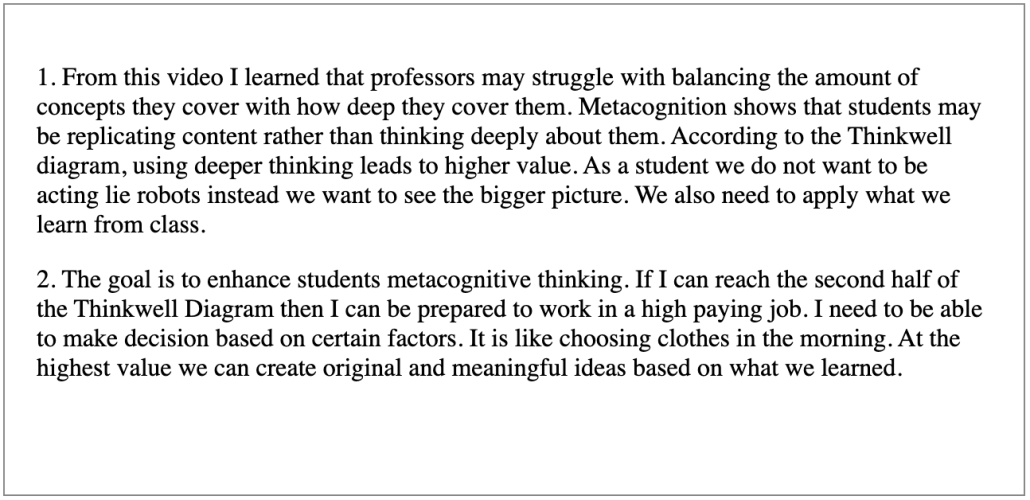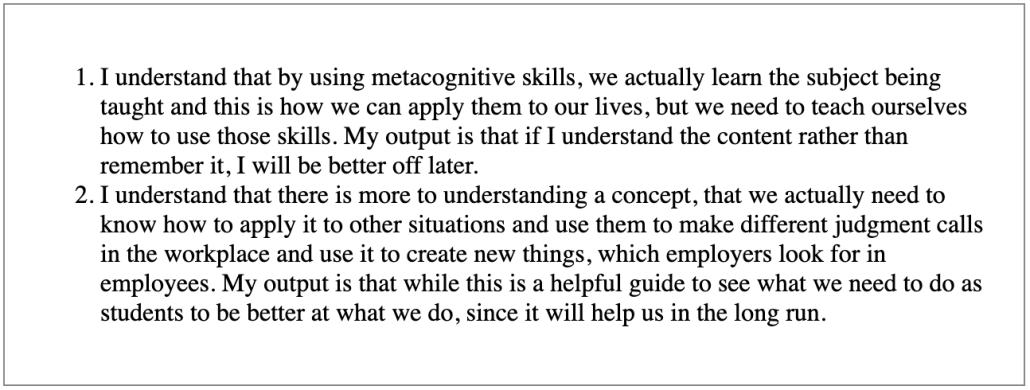Are you a grades educator or an outcomes educator?
I discovered that I had changed from a grades educator to an outcome educator over time. While cleaning out several old work boxes, I found some files from twenty years ago. I came across a folder that I labeled “encouragement.” In it, I was surprised to discover several letters from students, faculty and staff who were reporting the impact the metacognitive work I had done with them had on their performance.
Here’s a sampling of those responses.
This first message is from a time when students still wrote hand-written messages. I realize that seems like the stone age to some of you.
Test #1: 37
Test #2: 90
I’ve always been a sucker for a BOGO. Adopt one strategy and benefit in every course!
Student 1
Grade before: 50
Grade after: 86
Student #2
Grade before: Fs and Ds
Grades after: 90, 80 and 98
Make sure you check out the year these messages were sent (lol). This doesn’t list the before grades, but I would guess they were in the 60s or low 70s.
Good strategies work with all ages. (Can you believe that AOL was the default email at one time? That was a lifetime ago. Does AOL still exist?)
Lots of good grades from an adult learner! “Old dogs can learn new tricks!”
This discovery came on the heels of some qualitative data I recently received from one of the schools in which I am currently consulting. (The school is in its first year of its Quality Enhancement Plan (QEP), a project that is required by the SACSCOC accrediting body.)
Here’s a sampling of the more recent responses from students whose professor ask them to watch and reflect on the Differentiating Thinking Skills videos.
In a little more than a year, this school’s D, F, W rate (percentage of students making grades of D, F, or withdrawing) in a required first-year course has plummeted from 47% to 15%!
(What I find most interesting now is that some of the professors have seen the overall class mean score improve, which shows that most students are experiencing gains rather than outliers.)
I couldn’t help myself from comparing the two types of comments. I recalled that twenty years ago, I used to assure students and institutions that their students would see an immediate estimated 35-point improvement in performance, and I would tell them that the increase would occur in multiple courses. (Click here to watch a group of students sharing their dramatic grade improvement. It’s an oldie but goodie!)
Somewhere along the journey, I stopped sharing numbers. I think I did this because the 35-point jump became routine. I expected it to happen. Each school I’ve worked with during the past twenty years has experienced large jumps in student performance — you don’t decrease D, F, W rates by 30% without them. But I stopped sharing this type of news. To me, grades are lagging indicators. Grades are to students what retention is to schools. They are byproducts of many things done right well before the result. Neither should ever be the focus. They should be by-products. They are affirmations of jobs done well.
It seems that as I learned more about the mechanisms that contributed to the grade increase, I became more interested in factors that predicted high performance, AKA leading indicators. (Click here to view an article on leading and lagging indicators.)
All schools want to know ways to improve student performance definitively and systematically. But performance is defined differently. Some schools are focused on grades while others focus on outcomes.
My question for you is: Are you a grades educator? This means you care about students’ grades more than anything else. Or are you an outcome educator? This means you look to the outcomes students can generate.
I’d love to hear where you tend to focus.









0 Comments